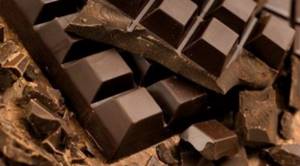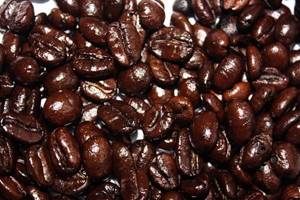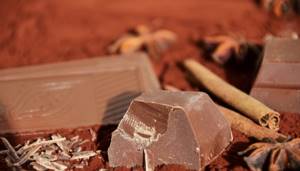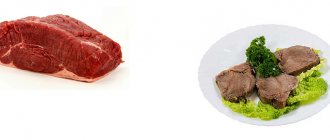People have long debated the health benefits of various foods. But the biggest culprit in the controversy is chocolate. Is it that harmful? Was it possible to find a compromise between the point of view of the world's chocolate magnates and the medical community? What does research tell us? Let's figure it out together.
Calorie content and composition of dark chocolate
Dark chocolate is a product of fermented and processed cocoa beans (nibs), which are the seeds of the cocoa tree. Cocoa solids and cocoa butter are two main ingredients taken from the fatty cocoa bean. Depending on the ratio of cocoa butter and solids contained in dark chocolate, its taste also differs. It can be either semi-sweet or quite tart. The last option is intended for special gourmets. After all, few people will like dark chocolate containing cocoa in a concentration of 97 - 99%, but there are also such connoisseurs.

When studying the composition of dark chocolate, you should pay attention to additional ingredients: sweeteners (sugar, cane sugar, coconut sugar, isomalt, maltitol, erythritol, etc.), lecithin (usually soy). It is advisable to make friends with people who make artisan or raw chocolate. This chocolate usually contains more natural sweeteners (for example, stevia) and does not contain soy lecithin. By the way, this is also an additional motivation to learn a new skill and learn how to make dark chocolate yourself! If, after all, there is no opportunity to make friends with such a person, then in the store it will be difficult for you to choose chocolate with a good composition and avoid unwanted ingredients. In this case, at least focus on ensuring that sugar is in the last position on the list.
NB! The composition of Vivani’s dark chocolate is very interesting. You can order this on the IHERB website or purchase it at a health food store.
The calorie content of dark chocolate is approximately 539 kcal per 100 grams of product and about 168 kcal per ounce (5-6 bars). The figure will differ depending on the percentage of cocoa in the finished product. Typically, the number ranges from 70 to 99%.
NB! You can find out the exact number of calories in your favorite brand of dark chocolate by using the FatSecret app.
Dark chocolate is known for its beneficial properties due to its high antioxidant content. In addition, dark chocolate is rich in magnesium, copper, and manganese. We will discuss its advantages and disadvantages in more detail below.
What should be the composition of dark chocolate according to GOST?

The basis of the composition of high-quality dark chocolate according to GOST 31721-2012 is:
- grated cocoa;
- cocoa butter (at least 20%);
- sugar.
The treat may also include:
- additions: nuts, peanuts, candied fruits, dried fruits, waffles, coconut flakes;
- filling: yogurt, jam, preserves, caramel;
- aromatic additives: coffee, cognac, ethyl alcohol, pepper, vanilla;
- thickeners and stabilizers: soy lecithin.
Instead of sugar, sweeteners can be added to chocolate:
- erythritol;
- stevia;
- maltitol
The benefits of dark chocolate
- Antioxidant activity
Dark chocolate is loaded with biologically active compounds - antioxidants, the main task of which is to fight oxidative stress. Oxidative stress is a process of cell damage that is caused by exposure to reactive oxygen species and free radicals. I think many people have heard about free radicals. The more free radicals in the body, the higher the risk of many diseases of the 21st century. Neurodegenerative and cardiovascular diseases are especially in the lead. In addition, oxidative stress is associated with the progression of aging.
The benefits of dark chocolate in fighting free radical damage are mainly due to compounds such as polyphenols, flavanols and catechins.
A recent study found that cocoa and dark chocolate contained more antioxidant activity, polyphenols and flavanols than other fruits tested, such as acai berries and blueberries.

- Heart protection
Flavanols, chemicals found in dark chocolate, have benefits for heart health. Dark chocolate contains 2-3 times more flavanol-rich cocoa solids than milk chocolate. Flavanols have been shown to support the production of nitric oxide (NO) in the endothelium (the inner cellular lining of blood vessels), which helps relax blood vessels and improve blood flow, thereby lowering blood pressure. And several observational studies have shown a link between chocolate consumption and a reduced risk of cardiovascular disease. It turns out that dark chocolate is good for our heart. Don't deny yourself the pleasure!
- Improvement of cognitive functions
And again we sing odes to flavanols, which are contained in the main component of dark chocolate - cocoa! One study of 90 older adults found that regular consumption of flavanols reduced age-related cognitive dysfunction. Unfortunately, dementia (dementia) is a common phenomenon not only in the United States, but also in Russia among older people.
Another study of 2,000 older adults aged 70 to 74 examined the relationship between consumption of flavonoid-rich chocolate, wine and tea and cognitive performance. As a result, people who consumed dark chocolate performed better on intelligence tests.
N. _ B. ! It turns out it was not for nothing that our teachers at school advised us to eat chocolate before an important exam. True, they did not take into account the fact that the benefits would come exclusively from dark chocolate, and not from the much-loved Milka.
- Good mood
Many people have heard that dark chocolate is good for our mental well-being. And now an interesting fact for you. One study of 72 people found that polyphenols found in cocoa improved mood. Healthy participants were divided into three groups. Some received 500 mg of polyphenols from the chocolate drink, others - 250 mg, and the rest - 0 mg. The mood of the participants was tested a few hours after taking the drink, as well as after 30 days of this peculiar treatment! Scientists were surprised when they found a positive connection between a high dose of polyphenols in a chocolate drink and an increased sense of calm and satisfaction.

NB! Enjoy dark chocolate, slowly savoring each piece, and do not deprive yourself of the little joys in life!
- Sun protection
The skeptics must have fainted by now. Don't worry, you're supposed to eat the chocolate, not spread it all over your body in a sexy way! In one study of 30 people, regular consumption of dark chocolate, rich in flavanols, was shown to protect human skin from UV radiation. By the way, regular chocolate does not have this effect.
These advantages sound even too rosy, but for the sake of objectivity, we should warn about negative effects too.
Harm of dark chocolate
- Sugar
Even though dark chocolate contains less sugar than milk and white chocolate, there is still a risk of overdoing it. For example, dark chocolate containing 72% cocoa also contains a considerable amount of sugar - approximately 24 g per 100 g of product. The WHO (World Health Organization) recommends reducing your caloric intake from free sugars to 25g per day, which is equivalent to 6 teaspoons of sugar.
NB! Excess sugar negatively affects the condition of teeth and gums, leads to insulin resistance, and subsequently to diabetes. And these are far from its only negative properties.
- Caffeine
A small amount of caffeine in dark chocolate will not harm you, but large doses can cause anxiety, restlessness and trouble sleeping.

Here we should recall the famous statement of the Swiss alchemist and physician Paracelsus: “Everything is poison, everything is medicine; both are determined by the dose.”
- Soy lecithin
Soy lecithin is often added to dark chocolate as an emulsifier. It contains trace amounts of soy proteins, which may cause allergies in people who are particularly sensitive to soy products.
Some people are wary of soy lecithin out of a desire to avoid genetically modified soy. GMOs are a controversial and controversial topic, but if you're concerned about soy in your favorite treat, opt for organic dark chocolate.
Is it possible for children
This product should be used with caution in children. Many children are allergic to it. If it is not there and there are no contraindications, then you can give dark chocolate to a child over 3 years old, no more than 20 g per week, after 7 years - no more than 40 g per 7 days. In this case, limit yourself to 60-70% cocoa concentration. And be sure to consider whether your baby will even like the taste of such a product.

Contraindications
Gastritis and stomach acid reflux, since dark chocolate irritates the wall of the esophagus and can cause heartburn and pain in people suffering from these gastrointestinal disorders. Other diseases of the gastrointestinal tract in the acute stage are also a contraindication and require consultation with a doctor.
Pregnant women should use dark chocolate with caution due to its caffeine content. There is evidence that high doses of caffeine during pregnancy may be associated with premature birth, miscarriage and low birth weight. Despite the fact that the evidence base is quite contradictory, it is better to play it safe once again and consult with a specialist. Women who are breastfeeding should also consume dark chocolate in limited quantities, since caffeine is passed on to the baby through mother's milk and can cause irritability and tearfulness on the baby's part.
Dark chocolate for diabetes
Due to the high cocoa content in dark chocolate, people's insulin sensitivity improves and their blood sugar decreases, which is not only a good prevention of diabetes, but also useful for people who have already been diagnosed with type 2 diabetes.
In this case, preference should be given to dark chocolate with a cocoa content above 90%, since such a product contains virtually no sugar. Or give preference to dark chocolate with stevia, but carefully read the composition to avoid unnecessary ingredients, such as maltitol, sorbitol, isomalt, which can have a laxative effect and generally have a negative impact on human health.
Allowance of chocolate per day
There are no officially established “doses” for consuming dark chocolate. However, to avoid the negative effects described above, it is enough to eat a few pieces.
Chocolate should not be substituted for other meals. Remember that your diet should consist of complete animal protein, healthy fats found in whole dairy products, red fish, butter, coconut oil, olive oil, nuts and avocados, and a moderate amount of carbohydrates.
The number of kilocalories in a slice, strip and whole chocolate bar

Answer the question in detail: “How many calories are in dark chocolate?” possible as follows:
- one hundred gram bar of dark chocolate contains about 540 kilocalories;
- “strip” - a little more than 100 kilocalories.
- in one piece - a little more than 25 kilocalories.
With this valuable knowledge, you can choose the optimal portion of sweets for yourself.
The benefits of chocolate for men
In popular women's magazines you can find information that dark chocolate is a natural aphrodisiac and increases sexual desire in men.
People often tend to believe in myths. After all, the word “aphrodisiac” contains a reference to the ancient Greek and arousing goddess of love - Aphrodite. As we know, Aphrodite arose from the foam of the sea, and reached the shore on a shell. Since then, desire-enhancing properties have also been attributed to oysters. I would not like to upset you, dear readers, but at the moment there are no reliable studies proving that there are products that have at least some magical effect on libido.
The benefits of dark chocolate for men are absolutely the same as for women. Benefits for heart health, brain health and good mood are a bonus. All this gives us the green light to include sweets in our diet.
It's also helpful to eat some chocolate before an intense workout to provide your body with extra energy.
Story
It seems as if chocolate has always been around, because it is sold absolutely everywhere, but this is not so.
This delicacy begins its history on the coast of Mexico, South and Central Africa, where cocoa beans grow, from which in the future people will make chocolate. It is believed that chocolate appeared in Europe only after the discovery of America, since Columbus really liked this sweetness. Then the dessert began to spread across countries and was replenished with various additives and spices.

Useful tips
In conclusion, I would like to note that when consuming any sweet product, it is important to include mindfulness. Focus your attention completely on absorbing food, try to distinguish the rich shades of taste of dark chocolate, brew yourself delicious tea in a beautiful porcelain bowl. Never eat chocolate in a hurry! Do not turn pleasure into “fast food”, then the feeling of fullness will come faster, and you will not have problems with overeating, which is directly related to excess weight gain and health problems. Try to find the “sweetness of life” in other things, and sweeten it just a little with chocolate, like adding a pinch of curry to a finished dish!
In the videos below you can also find interesting facts and answers to your questions about different types of chocolate.
I wish you all health, energy and vigor! Taking care of you, Victoria Gurova.











